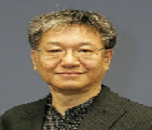
Peng-Sheng Wei
National Sun Yat-Sen University, Taiwan
Title: Mechanisms of mass transfer on porosity during solidification
Biography
Biography: Peng-Sheng Wei
Abstract
Pore formation and its shape in solid influence not only microstructure of materials, but also contemporary issues of various sciences of biology, engineering, foods, geophysics and climate change, etc. In order to remove and control porosity, understanding its formation is important. A pore formed in solid is a consequence of a bubble nucleated by super-saturation and entrapped by a solidification front. This work accounts for realistic mass and momentum transport across a self-consistently and analytically determined shape of the bubble cap, whose surface is in physico-chemical equilibrium beyond the solidification front. Accurate determination of contact angle from a realistic shape of the cap is required to predict the relevant shape of the pore in solid. It was systematically found that there are two different solute transport models subject to thin and thick thicknesses of concentration boundary layers on the solidification front. Case 1 accounts for species transport from the pore across an emerged cap through a thin concentration boundary layer on the solidification front into surrounding liquid in the early stage, whereas Case 2 is subject to species transport from the surrounding liquid across a submerged cap within a thick concentration boundary layer into the pore. The analytical results find that the variation of solute gas pressure in the pore with time determines development of the pore shape in solid increases in mass transfer coefficient and solidification rate decrease the pore radius. The predicted pore shape agrees with experimental data. A realistic prediction and control of the growth of the pore shape has therefore been obtained.
